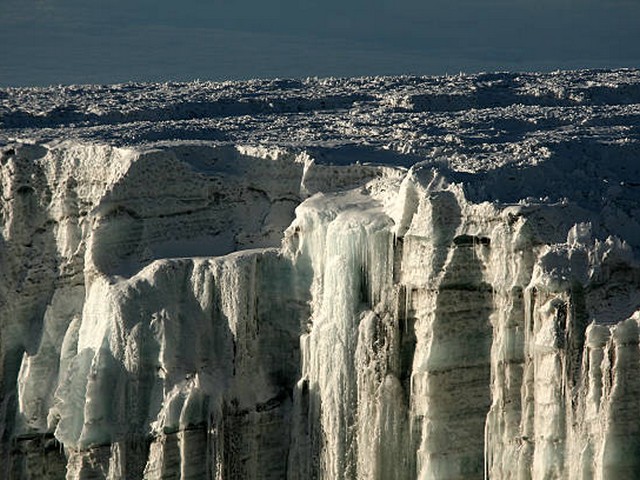How Kilimanjaro’s Altitude Affects Its Wildlife: A Journey Through the Clouds
Nestled in the heart of Tanzania, Mount Kilimanjaro is not only the highest peak in Africa but also a haven for diverse ecosystems and breathtaking wildlife. The majestic mountain’s unique altitude gradients create a series of micro-environments, each supporting different species and ecological processes. At Kilimanjaro Centre for Trekking and Ecotourism (KCTE), we are privileged to share the wonders of Kilimanjaro’s wildlife with adventurers from around the globe. Join us as we explore how Kilimanjaro’s soaring heights shape the life on its slopes, making it a truly unique destination for nature lovers and ecotourists alike.
The Altitudinal Canvas of Kilimanjaro
The Lowland Forests: A Verdant Gateway
At the base of Kilimanjaro, sprawling lowland forests buzz with life. These lush, dense forests are the first threshold of our ecological expedition. Here, towering trees and dense underbrush provide habitat for vibrant wildlife, including blue monkeys, bush babies, and the elusive African elephant. The moist, warm climate at this lower altitude supports a rich biodiversity that is the perfect introduction to Kilimanjaro’s ecological wonders.
Montane Woodlands: The Heartbeat of Diversity
Climbing higher, the air cools and the vegetation changes as we enter the montane woodlands. Between 1,800 and 2,800 meters, this zone is characterized by a cooler, wetter climate which nurtures a different array of flora and fauna. The montane zone is a paradise for birdwatchers, with species such as the Kilimanjaro white-eye and the Hartlaub’s turaco adorning the canopy. The elusive leopard also roams these woods, its presence whispered in the rustle of leaves and the silent gaze from the shadows.
Heath and Moorland: The Resilient Residents
As the altitude nears 3,000 meters, trees become sparse and the landscape opens into heath and moorland. This area, dominated by heathers and grasses, is battered by winds and cooler temperatures, creating a challenging environment for wildlife. Yet, adaptation is the melody of survival here. The Kilimanjaro shrew, a small, hardy creature, navigates this tough terrain. Meanwhile, the high-altitude sunbirds flit among the giant lobelias, adding a splash of color to the muted heath.
Alpine Desert: Life at the Edge
Surpassing 4,000 meters, the alpine desert zone presents an even more extreme environment. Daytime temperatures can soar, while nights are bitterly cold. Vegetation is sparse, but life endures. The nectar-rich flowers that manage to bloom attract insects, which in turn support small birds and mammals that have adapted to these harsh conditions. This zone challenges the very limits of ecological endurance, showcasing the raw power and beauty of nature’s adaptability.
The Summit: Ice and Solitude
Above 5,000 meters, the summit area is an icy world far removed from the lush greenery of Kilimanjaro’s base. Few life forms can sustain the extreme conditions near the summit. However, even here, occasional sightings of hardy lichens or the flight of a high-flying bird remind us that life, in its most tenacious forms, finds a way to endure.
The Impact of Altitude on Kilimanjaro’s Wildlife
The diverse altitudinal zones of Kilimanjaro create barriers and transitions that significantly influence wildlife distribution and behavior. Species adapt to their specific altitudinal niches, resulting in a vertical segregation that enhances Kilimanjaro’s biodiversity. This makes each trekking experience on Kilimanjaro not just a physical ascent, but a journey through distinct biological worlds.
Why Trek with Kilimanjaro Centre for Trekking and Ecotourism (KCTE)?
At KCTE, we understand that climbing Kilimanjaro is more than just a hike; it’s an opportunity to witness evolutionary biology in action and to connect with nature at its most profound. Our guided tours are designed to educate and inspire, providing insights into the ecological and conservation challenges facing Kilimanjaro today. By choosing KCTE, you’re not just embarking on an adventure; you’re also supporting sustainable tourism practices that help preserve Kilimanjaro’s ecosystems for future generations.
FAQs: Kilimanjaro’s Wildlife and Altitude
What wildlife can I expect to see at different altitudes of Kilimanjaro?
At lower altitudes, expect to encounter monkeys, antelopes, and a variety of birds. As you ascend, the wildlife will transition to smaller mammals like shrews and unique bird species adapted to cooler temperatures. The highest zones offer glimpses of specialized insects and resilient plant life.
How does altitude affect animal behavior on Kilimanjaro?
Animals adapt their behaviors to cope with the thinning oxygen levels and changing temperatures. Some species may have adapted hunting habits, while others have developed physical characteristics suited to cold environments.
Is Kilimanjaro safe for wildlife observation?
Yes, with KCTE, your safety and the preservation of wildlife are our priorities. Our expert guides ensure a safe, respectful distance during wildlife encounters, enhancing both your experience and the well-being of the animals.
Embark on Your Kilimanjaro Adventure
Exploring Kilimanjaro’s unique wildlife is a transformative experience that heightens the senses and expands the mind. Each step up this iconic mountain reveals new secrets and splendid natural wonders. Are you ready to witness the awe-inspiring connection between altitude and life? Book your climbing experience with Kilimanjaro Centre for Trekking and Ecotourism (KCTE) today, and step into a world where nature’s most profound mysteries unfold before your eyes. Let the adventure begin!




